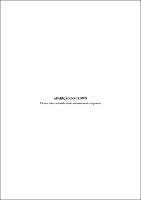| ???jsp.display-item.social.title??? |


|
Please use this identifier to cite or link to this item:
https://tede.ufam.edu.br/handle/tede/2391| ???metadata.dc.type???: | Dissertação |
| Title: | Aparição do Clown: De um mito racional-cristão ao nascimento da poesia |
| ???metadata.dc.creator???: | Rodrigues, José Alexandre Serrão  |
| ???metadata.dc.contributor.advisor1???: | Aleixo, Marcos Frederico Kruger |
| ???metadata.dc.description.resumo???: | O presente trabalho, chamado Aparição do clown: de um mito racional-cristão ao nascimento da poesia, é uma leitura interpretativa do poema homônimo de L. Ruas embasada em algumas teorias sobre o mito, cristianismo, filosofia e arte. Vale-se, em especial, das ideias de Theodor Adorno, Max Horkheimer e Martin Heidegger sobre a necessidade de o homem se reencontrar com a arte num mundo de visão utilitária. Nesse estudo hermenêutico aqui proposto, identifica-se a construção de dois mitos, que se encontram relacionados ao mesmo eu lírico da obra. Na elaboração dessas narrativas, o palhaço e a sua primeira forma, o clown, têm grande importância, pois são eles que, após serem evocados pelo eu, direcionam todas as ações do poema. No primeiro mito, há uma crítica à razão instrumental, que vem emoldurada por elementos cristãos. Nessa realidade evocada pelo palhaço, a razão se torna utilitária, deturpando-se com vistas a produzir um conhecimento capaz de dominar a natureza, banindo as representações simbólicas e artísticas da vida. A solução para aqueles que desejam se apartar desse contexto de opressão e, ao mesmo tempo, combatê-lo, encontra-se na construção da segunda realidade mítica: a da poesia. |
| Abstract: | This work, called Appearance of the clown: a rational-christian myth to birth poetry, is an interpretive reading of the poem of the same name by L. Ruas based on some theories about the myth, christianity, philosophy and art. It is, in particular, the ideas of Theodor Adorno, Max Horkheimer and Martin Heidegger on the need of man be reunited with art in a world of utilitarian vision. This hermeneutical study proposed here, identifies the construction of two myths, which are related to the same lyrical I of the poem. In making such narratives, the palhaço and his first form, the clown, have great importance, because they who, after being evoked by I, direct all actions of the poem. In the first myth, there is a critique of instrumental reason, which is framed by christian elements. In this reality evoked by palhaço, the reason becomes utilitarian, misrepresent themselves to produce a knowledge able to dominate nature, banishing the symbolic representations and artistic of life. The solution for those who want to separate out this context of oppression and, at the same time, fight it, lies in the construction of the second mythic reality: the poetry. |
| Keywords: | Clown Mito Cristianismo Arte Razão Instrumental Poesia Clown Myth Christianity Art Instrumental Reason Poetry |
| ???metadata.dc.subject.cnpq???: | LINGUÍSTICA, LETRAS E ARTES: LETRAS |
| Language: | por |
| ???metadata.dc.publisher.country???: | BR |
| Publisher: | Universidade Federal do Amazonas |
| ???metadata.dc.publisher.initials???: | UFAM |
| ???metadata.dc.publisher.department???: | Instituto de Ciências Humanas e Letras |
| ???metadata.dc.publisher.program???: | Programa de Pós-graduação em Letras |
| Citation: | RODRIGUES, José Alexandre Serrão. Aparição do Clown: De um mito racional-cristão ao nascimento da poesia. 2012. 108 f. Dissertação (Mestrado em Letras) - Universidade Federal do Amazonas, Manaus, 2012. |
| ???metadata.dc.rights???: | Acesso Aberto |
| URI: | http://tede.ufam.edu.br/handle/tede/2391 |
| Issue Date: | 12-Apr-2012 |
| Appears in Collections: | Mestrado em Letras |
Files in This Item:
| File | Description | Size | Format | |
|---|---|---|---|---|
| Jose_A_S_Rodrigues.pdf | 557.29 kB | Adobe PDF |  Download/Open Preview |
Items in DSpace are protected by copyright, with all rights reserved, unless otherwise indicated.




